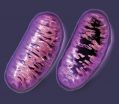(Press-News.org) MINNEAPOLIS – A new guideline from the American Academy of Neurology (AAN) and the American Association of Neuromuscular & Electrodiagnostic Medicine (AANEM) recommends guidance on how doctors should evaluate the full picture—from symptoms, family history and ethnicity to a physical exam and certain lab test results—in order to determine what genetic tests may best diagnose a person's subtype of limb-girdle or distal muscular dystrophy. The guideline is published in the October 14, 2014, print issue of Neurology®, the medical journal of the American Academy of Neurology. To develop the guideline, researchers reviewed all of the available studies on the disorders, which cause muscles to waste away.
"These are rare muscle diseases that can be difficult to diagnose," said guideline lead author Pushpa Narayanaswami, MD, of Harvard Medical School in Boston and a Fellow of the AAN and AANEM. "With an accurate diagnosis, unnecessary tests or treatments may be avoided. Knowing the specific subtype is important for getting the best possible care."
"Limb girdle" refers to the hip and shoulder areas, where the limbs attach to the body. Limb-girdle muscular dystrophy most affects muscles close to the center of the body, such as in the areas near the tops of the arms and legs. Distal muscular dystrophy most affects muscles farther away from the center of the body, such as muscles in the hands and feet. There are several known subtypes of limb-girdle muscular dystrophy and distal muscular dystrophy. Experts continue to discover new subtypes.
Certain signs and symptoms and other information such as family history can help doctors determine a person's subtype. "Looking at a range of clinical signs and symptoms—such as which muscles are weak and if there is muscle wasting or enlargement, winging out of the shoulder blades, early signs of contracted limbs, rigidity of the neck or back, or heart or lung involvement—can help doctors determine which genetic test to order," said senior author Anthony A. Amato, MD, also of the Harvard Medical School and a Fellow of the AAN and AANEM. "This in turn can shorten the time to diagnosis and start of treatment while helping avoid more extensive and expensive testing."
While there is no cure for these disorders, complications can be managed. The guideline makes recommendations about treating and managing complications, which may include muscle symptoms, heart problems and breathing problems.
"Before this publication, there were no care guidelines that covered both limb-girdle muscular dystrophy and distal MD and were based on the evidence," said Julie Bolen, PhD, MPH, team lead, National Center on Birth Defects and Developmental Disabilities, Centers for Disease Control and Prevention (CDC). "We hope that this guideline will fill that gap for both the people who live with these rare disorders and the health care professionals who treat them."
The guideline recommends that care for people with these disorders should be coordinated through treatment centers specializing in muscular dystrophy. People with these disorders should tell their doctors about any symptoms such as the heart beating too fast or skipping beats, shortness of breath and pain or difficulty in swallowing, as treatments may be available. People should also talk to their doctors about exercises that are safe.
INFORMATION:
Media Contacts:
Rachel Seroka, rseroka@aan.com, (612) 928-6129
Michelle Uher, muher@aan.com, (612) 928-6120
The development of the guideline was funded in part by a grant from the CDC.
The guideline was endorsed by the American Academy of Physical Medicine and Rehabilitation, Child Neurology Society, Jain Foundation and Muscular Dystrophy Association.
The American Academy of Neurology, an association of more than 28,000 neurologists and neuroscience professionals, is dedicated to promoting the highest quality patient-centered neurologic care. A neurologist is a doctor with specialized training in diagnosing, treating and managing disorders of the brain and nervous system such as Alzheimer's disease, stroke, migraine, multiple sclerosis, brain injury, Parkinson's disease and epilepsy.
For more information about the American Academy of Neurology, visit http://www.aan.com or find us on Facebook, Twitter, Google+ and YouTube.
The American Association of Neuromuscular & Electrodiagnostic Medicine is an association of nearly 5,000 neurologists, physical medicine and rehabilitation, and other health care professionals and is dedicated to improving the care of patients with neuromuscular diseases.
For more information about the American Association of Neuromuscular & Electrodiagnostic Medicine, please visit http://www.aanem.org/Home.aspx or find us on Twitter and YouTube.
Bottom Line: Adults in the United States suffered from approximately 14 million major medical conditions attributable to smoking.
Author: Brian L. Rostron, Ph.D., M.P.H., of the Center for Tobacco Products, U.S. Food and Drug Administration, Silver Spring, Md., and colleagues.
Background: Smoking is the leading cause of preventable disease in the United States. Cigarette smoking harms nearly every organ and organ system in the body. The authors estimated major medical conditions (morbidity) attributed to smoking in 2009.
How the Study Was Conducted: The authors ...
Bottom Line: A study of teenagers suggests there is no association between physical activity (PA) and the development of depressive symptoms later in adolescence.
Author: Umar Toseeb, Ph.D., of the University of Cambridge, United Kingdom, and colleagues.
Background: Depression contributes to the global burden of disease. A reduction in the associated costs – both personal and financial – would benefit society. The onset of depression is thought to happen in adolescence or earlier so preventive measures during this period of life could be beneficial. PA ...
Bottom Line: In patients with Alzheimer disease (AD), increased cerebrospinal fluid levels of orexin, which helps regulate the sleep-wake cycle, may be associated with sleep deterioration, which appears to be associated with cognitive decline.
Authors: Claudio Liguori, M.D., of the University of Rome Tor Vergata, Italy, and colleagues.
Background: AD is a neurodegenerative disease marked by progressive memory loss and cognitive decline and often complicated by sleep disturbance. Orexin A is part of the orexinergic system and it helps regulate the sleep-wake cycle ...
Results of a small clinical trial suggest that a chemical derived from broccoli sprouts — and best known for claims that it can help prevent certain cancers — may ease classic behavioral symptoms in those with autism spectrum disorders (ASDs).
The study, a joint effort by scientists at MassGeneral Hospital for Children and the Johns Hopkins University School of Medicine, involved 40 teenage boys and young men, ages 13 to 27, with moderate to severe autism.
In a report published online in the journal Proceedings of the National Academy of Sciences during ...
A small study led by investigators at MassGeneral Hospital for Children (MGHfC) and Johns Hopkins University School of Medicine has found evidence that daily treatment with sulforaphane – a molecule found in foods such as broccoli, cauliflower and cabbage – may improve some symptoms of autism spectrum disorders. In their report being published online in PNAS Early Edition, the investigators describe how participants receiving a daily dose of sulforaphane showed improvement in both behavioral and communication assessments in as little as four weeks. The authors ...
The discovery of a "maternal age effect" by a team of Penn State scientists that could be used to predict the accumulation of mitochondrial DNA mutations in maternal egg cells -- and the transmission of these mutations to children -- could provide valuable insights for genetic counseling. These mutations cause more than 200 diseases and contribute to others such as diabetes, cancer, Parkinson's disease, and Alzheimer's disease. The study found greater rates of the mitochondrial DNA variants in children born to older mothers, as well as in the mothers themselves. The research ...
BOSTON – Increased consumption of table sugar and high-fructose corn syrup has been linked to rising rates of obesity and type 2 diabetes in the United States and throughout the world. Both sweeteners are commonly found in processed foods and sugar-sweetened beverages, and both are made up of nearly equal amounts of two basic sugars, glucose and fructose.
The effects of glucose ingestion in humans are well understood, in part, because they are easily assessed by performing a Glucose Tolerance Test, which measures serum glucose levels after glucose ingestion and ...
Long assumed to be destructive to tissues and cells, "free radicals" generated by the cell's mitochondria—the energy producing structures in the cell—are actually beneficial to healing wounds.
That's the conclusion of biologists at UC San Diego who discovered that "reactive oxygen species"—chemically reactive molecules containing oxygen, such as peroxides, commonly referred to as free radicals—are necessary for the proper healing of skin wounds in the laboratory roundworm C. elegans.
In a paper published in the October 13 issue of the journal ...
Scientists at Imperial College London have developed a new cancer drug which they plan to trial in multiple myeloma patients by the end of next year.
In a paper published today in the journal Cancer Cell, the researchers report how the drug, known as DTP3, kills myeloma cells in laboratory tests in human cells and mice, without causing any toxic side effects, which is the main problem with most other cancer drugs. The new drug works by stopping a key process that allows cancer cells to multiply.
The team have been awarded Biomedical Catalyst funding from the Medical ...
Scientists from the Department of Life Science, National Taiwan Normal University and the Biodiversity Research Center, Academia Sinica described a new endemic land snail species. The new species Aegista diversifamilia was long confused for the widely distributed A. subchinensis. The study was published in the open access journal ZooKeys.
Aegista subchinensis was first described in 1884 and was thought to be widely distributed in Taiwan. In 2003, one of the co-authors Dr. Yen-Chang Lee noticed that there was morphological divergence between the western and eastern populations ...


